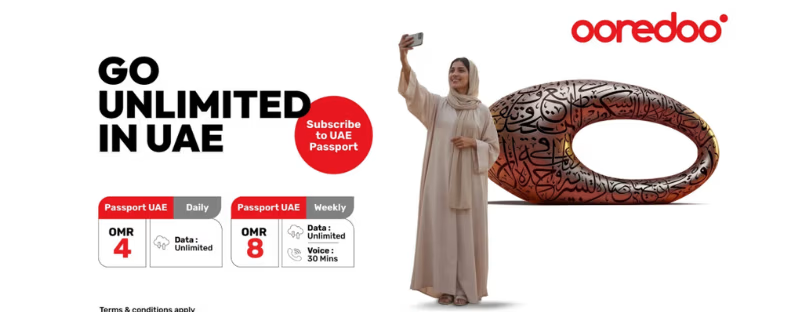
Why Middle East Layovers Are the Worst for Roaming — and How Frequent Flyers Are Quietly Fixing It
If you’ve flown long-haul in the past few years, chances are you’ve had a stopover in the Middle East. Dubai, Doha, Abu Dhabi, and Istanbul (not technically in the Middle East, but it often gets grouped into the same “mega hub” category)—these airports have become the crossroads of modern aviation. And for good reason: Gulf carriers have mastered the art of long-haul travel—smooth connections, competitive fares, and lounges that make some hotels look basic.
But here’s the part they don’t tell you when you book that great deal: layovers in the Middle East can quietly become a roaming nightmare. One quick WhatsApp call or email check-in at Dubai International, and you could be staring down a roaming bill bigger than the ticket itself.
Let’s break down why roaming in Middle Eastern hubs is such a pain, how frequent flyers are learning to sidestep the problem, and what you can do to avoid getting stung on your next trip.
The Expensive Reality of Roaming in the Gulf
The first thing you notice when you land in Dubai, Doha, or Abu Dhabi is how fast the networks are. 5G lights up your phone before you’ve even taxied to the gate. But those lightning-fast bars come with a price. Gulf operators, such as Etisalat (UAE), Ooredoo (Qatar), and STC (Saudi Arabia), have some of the most expensive roaming agreements in the world.
Why? Two reasons:
- Market Structure—These telcos operate in tightly controlled, often semi-state-owned environments. They don’t compete on cheap roaming deals because their business models don’t rely on it. In fact, roaming is one of their most lucrative revenue streams.
- Airport Trap Pricing—Middle East hubs see tens of millions of passengers every year who never leave the airport. For operators, it’s a captive audience. They know you’re tired, you’re between flights, and you need connectivity. That quick 500 MB roaming package your home carrier offers? In Dubai, it can burn out in minutes.
It’s no exaggeration: I’ve spoken to travelers who were charged €50 just to refresh emails during a three-hour layover. And if your airline app starts updating or your cloud syncs in the background, that number skyrockets.
The Hidden Cost of “Free” Airport Wi-Fi
Now you might think, “No problem, I’ll just use airport Wi-Fi.” Except here’s the catch—Gulf airports run on tiered access. Yes, there’s free Wi-Fi, but it’s usually throttled, requires repeated re-logins, and often won’t support VPNs or video calls. If you want decent speed, you’re directed to premium Wi-Fi packages that cost nearly as much as a day roaming pass.
And then there’s security. Public Wi-Fi in airports is a goldmine for data sniffers. Business travelers sending sensitive emails over open connections risk much more than just slow speeds. Many executives I know refuse to touch public Wi-Fi unless they absolutely have to.
Why Business Travelers Feel It Most
For leisure travelers, a few hours offline during a layover isn’t the end of the world. But for business travelers, those few hours are often when the most urgent emails land. You’re connecting between New York and Singapore or London and Sydney, and your inbox is exploding. Missing that reply to a client or HQ update could mean walking into your destination already behind.
The irony? Airlines actively market their hubs as “seamless business travel gateways,” but the connectivity gap leaves professionals frustrated—or worse, with hundreds of euros in roaming charges expensed to their companies.
The Quiet Fix: eSIMs and Pre-Loaded Regional Plans
Here’s where the frequent flyer crowd has gotten smart. Instead of relying on their home carrier’s expensive roaming or gambling on patchy airport Wi-Fi, they’ve started carrying backup connectivity in their pockets—literally.
The main solutions:
- eSIMs—These digital SIMs can be downloaded directly onto your phone before your trip. Frequent flyers often buy regional Middle East eSIM packages that cover multiple countries (UAE, Qatar, Saudi Arabia, Bahrain, and Kuwait). Prices are still higher than, say, Southeast Asia, but they’re a fraction of what your home operator would charge for roaming. Example: A 3 GB Middle East eSIM might cost €15–20. Compare that to a single day of EU-to-UAE roaming at €10–15 per 100 MB.
- Multi-country Global eSIMs—Many travelers now opt for global eSIM packages that automatically activate in whichever country you land. That means you can fly New York → Dubai → Bangkok on one eSIM, with no SIM swapping and no surprise charges.
- Portable Wi-Fi (still a niche)—A few road warriors still carry devices like GlocalMe or Skyroam. But with eSIM adoption accelerating, these gadgets are increasingly being left behind.
- Both major UAE telecom providers—&e and du—now offer free SIM or eSIM cards to arriving travelers, making it easier to stay connected without immediate roaming costs.
How Travelers Are Actually Using Them
This isn’t just theory—I’ve watched it play out in lounges. A consultant flying from London → Dubai → Sydney switches to a Middle East eSIM as soon as the wheels hit the tarmac in DXB. By the time he’s in the lounge, his Teams notifications are flowing in seamlessly, and he hasn’t burned through €50 in roaming.
A startup founder I know flies between three continents almost monthly. She’s got multiple global eSIMs preloaded—one for business, one for backup, and another for destinations with tricky networks. The moment she lands, she checks which one connects best and switches instantly. “It’s my way of staying one step ahead of roaming,” she told me.
Different travelers, same strategy—stay connected, stay in control: I usually keep a few (8!) global eSIMs active on my phone—depending on where I land, I switch to whichever gives the best rates. It’s basically like carrying different currencies, but for data.
The Catch With eSIMs
It’s not all perfect. Some Gulf networks block or throttle third-party eSIM traffic, especially on data-hungry services like tethering. And not every device supports eSIM yet (though most new iPhones, Samsung Galaxy, and Pixel models do).
Another issue: Business travelers who expense connectivity often still default to their corporate roaming packages because the company hasn’t updated its travel policy to include eSIM reimbursement. Quietly, though, more professionals are paying out of pocket just to avoid the roaming shock — and then “forgetting” to submit the home carrier’s bill.
How to Protect Yourself on Your Next Layover
If you’re flying through the Gulf soon or for your next Gitex visit, here’s the playbook savvy travelers follow:
- Download an eSIM before you go – Don’t wait until you’re at the airport; buy and install it at home while you’re still on Wi-Fi.
- Choose a regional plan if possible – Especially if your itinerary includes multiple Middle Eastern stops.
- Turn off background data – Even a minute of cloud sync can eat 200 MB.
- Use Wi-Fi carefully – Stick to VPN-protected browsing if you must use free airport Wi-Fi.
- Expense smarter – If your company still only reimburses “traditional roaming,” have the conversation. The cost savings are undeniable.
The Bigger Picture
The Middle East has built itself into the ultimate global layover hub. But for all the glamour of its airports, the region remains one of the toughest for travelers trying to stay connected affordably. Roaming costs are high because they can be. And until regulators step in—unlikely, given the business models—the onus is on travelers to outsmart the system.
Frequent flyers already are. They’re not shouting about it, but eSIM adoption is quietly exploding in the Gulf corridors. If you’ve ever walked past a lounge and noticed every other traveler scanning a QR code on their phone, chances are they’re loading a backup eSIM.
Because in today’s world, being offline isn’t an option. But paying €50 to check your email during a layover? That’s a choice. And more and more travelers are choosing to fix it themselves.












